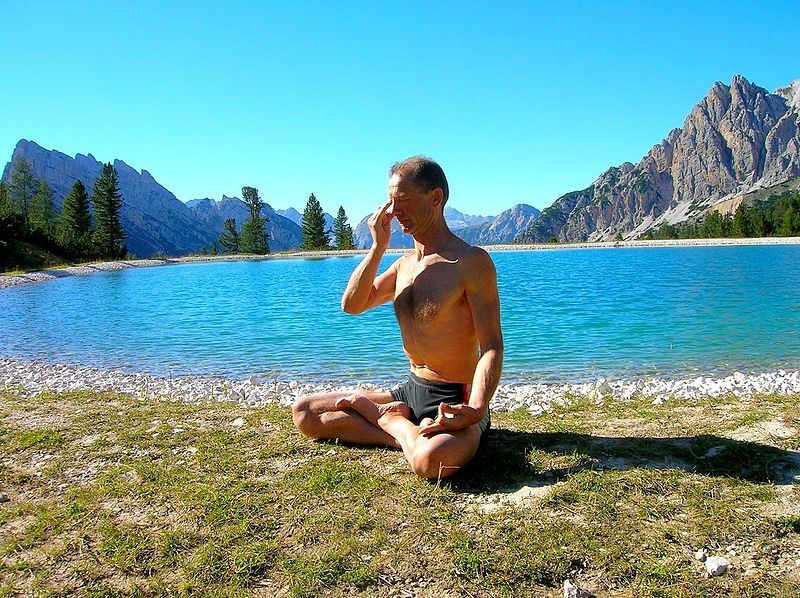An introduction to what pranayama is how and how to integrate it into a well rounded yoga practice. The breath is just as important as the poses themselves.
In a hatha yoga practice, the breathing is just as important as the poses themselves. It is through attention to and control of the breath, known as pranayama, that the mind and the body begin to work together so that the mind can become clear and focused. Prana is a Sanksrit word that means “energy” or “breath of life.” Yama is a Sanskrit word meaning “control” or “restrain,” so the word pranayama literally means “breath control.” It is through pranayama practice that the body begins to shift on a more energetic level as a result of a regular yoga practice. Without the breath, the practicing of yoga poses is simply exercise. The body will get stronger and more flexible but the true transformations that yoga can bring will remain out of reach.
What is Prana?
In yoga and Ayurveda, prana is the idea of the vital, life sustaining force of all living things. In physical form, prana rides on with the breath and by controlling the breath, prana can be also be controlled. When prana is moving freely through the body, there is a feeling of being energized and healthy and alert. When prana is blocked, energy levels are generally low, the immune system is suppressed and body may feel lethargic. Prana exists in every living thing and even in the air around us. It is the vital life force that brings everything together.
What is Pranayama?
The practice of pranayama is the practice of controlling the breath to move prana through the body. Various practices are used depending on the needs of the practitioner. Some help to calm the mind and prepare it for meditation, some help to energize the body. Generally, focusing on the inhale is more energizing while focusing on the exhale is more calming and cooling. The breath can be controlled by lengthening or shortening the inhale (Puraka), the exhale (Rechaka) or by holding the breath (Kumbhaka). There are practices that work with the speed and force of the breath as well as the length of holding of the breath.
Starting a Pranayama Practice
Begin simply when starting a pranayama practice. Find a comfortable place to lie down and bring the hands to the belly, close the eyes and take a few minutes to simply relax. Begin to notice the pace and rhythm of the breathing as well as how the body moves on the inhale and exhale. Sometimes it is helpful to think of the breath in three parts: the inhale, the exhale and the transition between the two. Attempt to bring even attention to all three parts of the breath.
If this is practiced every day it is possible to begin to feel the potential of a pranayama practice. In order to move to more complex practices it is immensely important to practice under the guidance of a teacher. Pranayama practices work with the energetic body on a deeper level than asana practices alone and the effects can be surprisingly strong. Look to local yoga studios or meditation centers for more information on finding a teacher and beginning a practice.
Conclusion
The practice of pranayama is equally important to the practice of asana in a well rounded yoga practice. Through the practice of pranayama deeper and more profound shifts can begin to take root to deepen a yoga practice. Through various pranayama exercises it is possible to control how prana is distributed through the body and therefore bring more energy into the body or calm and steady the mind depending on what is needed.
